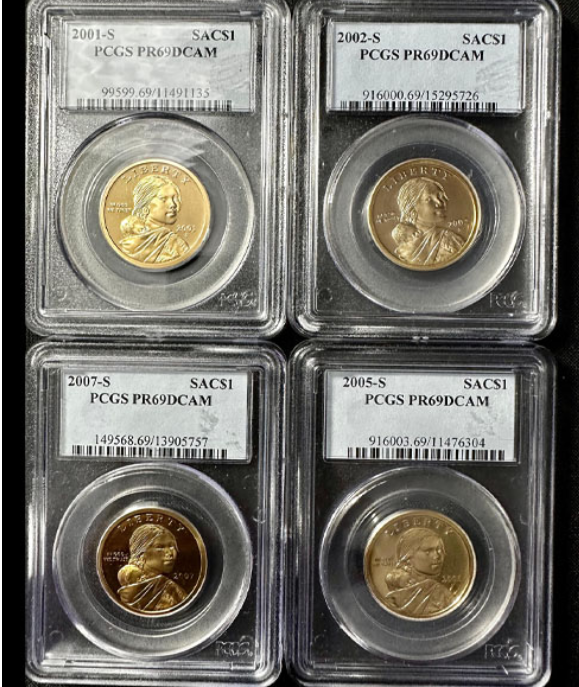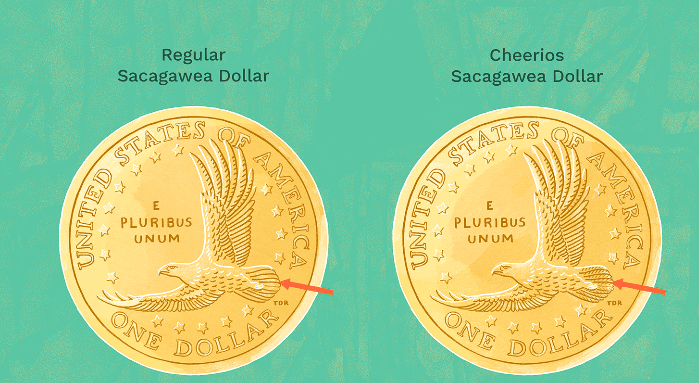The Hidden Value of Sacagawea Dollars: An In-Depth Exploration
Written on
Chapter 1: The Significance of the Sacagawea Dollar
Coin collectors are always on the lookout for unique additions to their collections, whether through retail purchases, trades with fellow enthusiasts, or online auctions. Among the array of coins available, the Sacagawea dollar coin is particularly notable due to its scarcity and deep historical significance.
These rare Sacagawea coins, which made their debut in 2000, are highly sought after for their intricate designs and the stories they convey. They commemorate Sacagawea, a key figure of the Shoshone Nation who significantly contributed to the Lewis and Clark Expedition from 1804 to 1806. This section delves into the fascinating elements of these coins, tracing their historical roots and their esteemed status among collectors.

Evaluating Sacagawea Coins
In March 2019, a Sacagawea Golden Dollar sold for $43 USD at Compass Auctions & Real Estate, LLC.
Understanding Sacagawea's Legacy and Historical Role
To truly grasp the value of rare Sacagawea dollars, one must acknowledge the historical significance of Sacagawea herself. In Western history, she is recognized for her vital contributions to the Corps of Discovery Expedition led by Lewis and Clark, which aimed to explore the vast expanse of land acquired by the U.S. through the Louisiana Purchase. Sacagawea's extensive knowledge of the North American terrain was crucial to the expedition's achievements.
Throughout the journey, which covered over 8,000 miles, Sacagawea skillfully navigated challenging natural landscapes, including the Rocky Mountains, her homeland. She also served as a translator between the expedition and the Native American tribes they encountered, fostering essential trust. Remarkably, she accomplished all this while caring for her infant son, Jean-Baptiste Charbonneau, affectionately known as “Baptiste,” who accompanied her on this historic journey.
Some interpret the Sacagawea dollar coin as a symbol of both the recognition and the commodification of Native American history, especially considering the frequent oversights in contemporary cultural narratives. However, the coin also stands as a tribute to Sacagawea's strength, intelligence, and maternal dedication. Exploring the narrative behind the Sacagawea dollar coin serves as a means to honor her lasting impact. Introduced just before the bicentennial of the Corps of Discovery Expedition, the Sacagawea dollar occupied a unique space from the outset. Despite initial disinterest from the American public, who preferred the Statue of Liberty design, the decision to prominently feature Sacagawea significantly enhanced her recognition in modern Western culture, addressing the historical inaccuracies that marred her representation throughout the 20th century.

The Coin's Design and Symbolism
The obverse side of the coin features Sacagawea carrying her son, Jean-Baptiste Charbonneau, on her back, highlighting her dual roles as an explorer and a mother. This image, crafted by American sculptor Glenna Goodacre, is inspired by the likeness of Randy’L He-dow Teton, a member of the Shoshone-Bannock/Cree tribes. The reverse showcases a stunning eagle in flight.
The Uniqueness and Collecting Appeal of Sacagawea Coins

The Sacagawea dollar is remarkable for several reasons. Its depiction of a woman places it in an exclusive category of U.S. coins. Additionally, its rarity is heightened by limited minting, with only 71 billion coins produced—a smaller quantity compared to other denominations.
#### 2000-P Cheerios Sacagawea Dollars
Among these, the 2000-P Cheerios Sacagawea dollars are particularly noteworthy for their scarcity. This special edition, resulting from a collaboration between Cheerios and the U.S. Mint, was limited to just 5,500 coins. These coins, found in select cereal boxes, feature unique tail feather details best appreciated under magnification. Despite their limited distribution, very few of these coins have surfaced, increasing their desirability.
#### Sacagawea Dollar’s Wounded Eagle Edition
Another notable variant is the Wounded Eagle Sacagawea dollar, which displays a rare mint error with an image resembling a spear piercing the eagle on the coin's reverse. Only about 100 of these coins are believed to have been minted in 2000, making them highly sought after by collectors.
These rare editions have paved the way for subsequent releases, such as the 2009 Native American dollar coin, created by the U.S. Mint to honor other prominent Native American figures. While primarily intended as collectibles, these coins also serve as legal tender, merging collectible worth with functional currency.
Factors Influencing the Value of Sacagawea Dollars
- Scarcity and Demand: The rarity of specific Sacagawea dollars enhances their appeal among collectors. Some coins were issued purely as collectibles or were not released into general circulation, rendering them exceedingly rare. The most coveted coins can reach six-figure prices due to their scarcity. Even more common Sacagawea dollars generally hold a value slightly above their nominal $1.00, often appraised at around $1.05.
- Condition: Given that the minting of Sacagawea dollars ceased in 2008, many coins exhibit signs of wear. A coin in excellent condition is likely to command a higher price, which is why the Cheerios Sacagawea dollars, minted specifically for inclusion in cereal boxes, are especially valuable.
- Minting Errors: Certain minting mistakes can significantly elevate the value of a Sacagawea dollar, including:
- Double Dies: This error occurs when a die strikes the coin twice, resulting in a duplicate image or lettering.
- Misplaced Dates: Coins lacking a minting date can increase a coin's collectability and value.
- Edge Lettering: A rare error for Sacagawea dollars where the date and mint mark appear on the edge—a feature more commonly found on presidential dollars. An edge-lettered Sacagawea dollar sold for $17,161.10 at a 2012 auction.
- Mules: Coins that have mismatched designs due to human error, combining images that were never intended to be paired, are especially prized.
Notable Sacagawea Dollar Auctions
- 2000 Lincoln Cent Overstrike: A coin showcasing a Lincoln cent superimposed on a Sacagawea dollar, with only two known examples. One sold for over $35,000 at auction in 2015, while another fetched $32,000 in 2020.
- 2014-D Sacagawea and Presidential Dollar Mule: Featuring Sacagawea on one side and the Statue of Liberty on the reverse, this unique coin was found in a bank's change bag and auctioned for $84,000 in 2021.
- 2000-P Sacagawea Dollar and Statehood Quarter Mule: With 18 known instances, this coin features George Washington's portrait alongside the Sacagawea eagle reverse. Despite its relative availability among rarities, one sold for $144,000 in 2022.
The Lasting Legacy of the Sacagawea Dollar
The Sacagawea dollar transcends mere monetary value; it encapsulates a significant aspect of history, honoring Sacagawea's contributions and the intricate stories of Native peoples. These coins not only provide a more accurate lens on historical narratives but also highlight the rich tapestry of America's past through the lens of coin collecting. Exploring the details and stories behind Sacagawea dollars, as well as other rare currencies, offers a unique insight into the complexities of American history.
Discover the true value of Sacagawea dollars in this informative video. Learn how historical context enhances their significance in coin collecting.
Uncover the secrets behind the most valuable Sacagawea dollar coins worth millions! Explore the top five rarest editions in this insightful presentation.